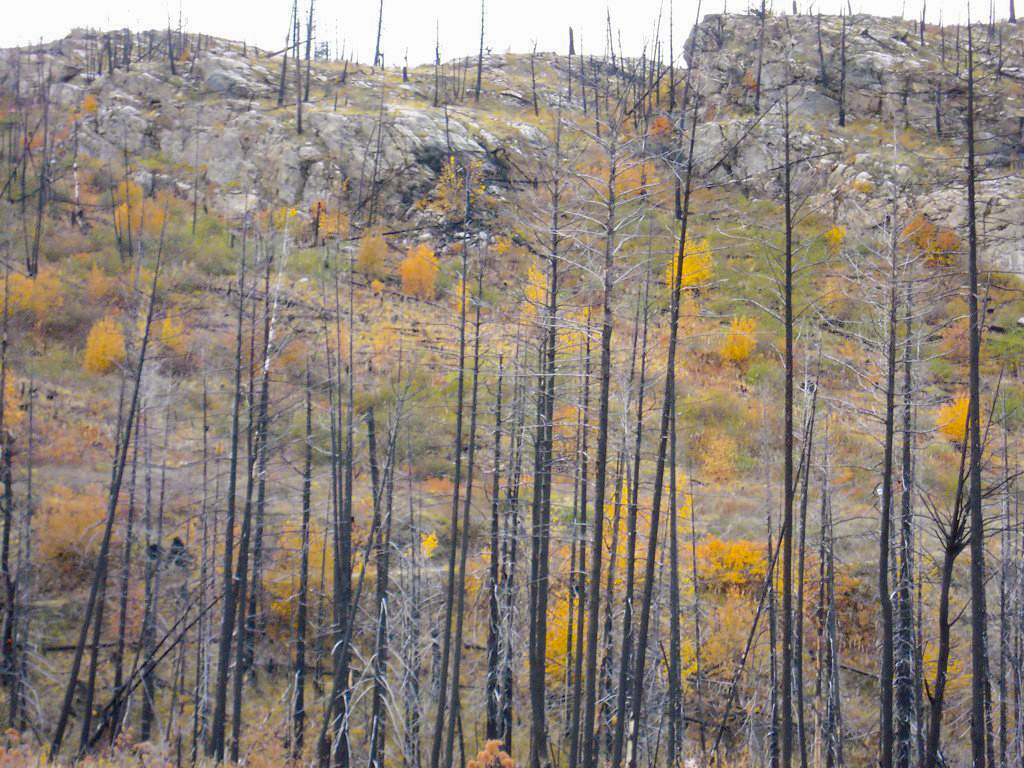
With roughly 2,000 wildfires in B.C. each year, forestry workers are often operating in or near fire-affected areas. It’s up to employers to ensure their crews are properly trained and prepared to recognize the risks and respond safely.
Wildfires are unpredictable, which makes a proactive approach essential to keeping workers safe. Employers are responsible for identifying hazards, assessing risks, and ensuring effective controls are in place — along with providing training, supervision, and fit-for-use equipment. Emergency preparation is also key.

Preparation is key
Forestry operations should begin by assessing wildfire risks at the worksite and developing a realistic, well-tested emergency response plan. The Wildfire Act outlines equipment that forestry operations must have to respond to wildfire and keep workers safe. This could include shovels, hoses, pumps, or large water tanks, depending on the level of risk assigned to your worksite.
“It’s essential that equipment is functional, easy to access, and that the appropriate crew members know how to use it,” says Phillips.
He adds that in the event of an evacuation, crews may need to fight fire just to reach safety. “The last thing you want is to be unable to control a small fire because you didn’t know where the hose or shovel was.”
In advance of the wildfire season, employers should review their inventory for the following:
- Equipment: Do you have all the necessary pieces of equipment as outlined in the C. Wildfire Act?
- Condition of the equipment: Is all equipment in working order, and does anything need to be serviced or repaired?
- Worker training records: Are all workers on site trained in how to use the equipment and do they know where to find it in an emergency?
Employer responsibilities
Employers are legally responsible for ensuring the health and safety of their workers — and that includes protecting them from the risks posed by wildfires and wildfire smoke. Like any other workplace hazard, these risks must be properly assessed and controlled.
Wildfire smoke can cause a range of health problems for workers, including shortness of breath, chest pain, coughing, and irritated eyes. The effects from wildfire smoke can vary, depending on the level and duration of exposure and individual (personal) factors.
Workers who may be exposed to wildfire smoke should be provided with respiratory protection, such as N95 masks, and should be fit tested and trained in how to use them properly. Employers should also monitor air quality levels and adjust work practices or reschedule outdoor work, if necessary, to minimize exposure.

Employers should also have plans in place in the event that evacuation is necessary. This includes training all workers in evacuation procedures.
Planning for the unpredictable
A comprehensive wildfire response plan should include:
- Exit routes: Identify and map multiple evacuation routes in case primary paths are compromised.
- Refuge areas: Plan for situations where evacuation isn’t possible. What protective barriers or natural features can offer temporary safety until help arrives?
- Communication: Ensure workers have access to reliable two-way communication devices and know how to use them.
Forestry operations should also be prepared to assist with wildfire response. Employers may be asked to deploy crews to manage small nearby fires or support mop-up efforts once the immediate danger has passed.
Worker Training
All workers must complete S-100 Fire Suppression and Safety training, which covers fire behaviour, safety, and evacuation. This training must be refreshed each year. Workers may also need training for specific equipment and should regularly take part in evacuation drills. A list of recognized instructors is available on the B.C. government website.
Dealing with the aftermath
 Wildfires can leave behind serious hazards. Unstable trees, ground debris, and wood ash may pose risks ranging from tripping and slipping to eye, nose, and respiratory irritation. Prolonged exposure to ash can contribute to long-term health conditions, such as chronic obstructive pulmonary disease.
Wildfires can leave behind serious hazards. Unstable trees, ground debris, and wood ash may pose risks ranging from tripping and slipping to eye, nose, and respiratory irritation. Prolonged exposure to ash can contribute to long-term health conditions, such as chronic obstructive pulmonary disease.
Before work resumes, employers must reassess the site for any new or heightened hazards to determine if it’s safe to enter. This includes checking for unstable ground, compromised trees, and poor air quality.
Additional precautions are required when harvesting burnt wood to protect workers. Employers should involve workers in the risk assessment process and ensure they clearly understand the controls in place to reduce exposure and prevent injuries.
WorkSafeBC’s 2025 approach
WorkSafeBC prevention officers conduct inspections that focus on reinforcing employers’ obligations to manage risks related to wildfire season, including smoke exposure, heat stress, and emergency response planning.
WorkSafeBC also works with the BC Wildfire Service and Ministry of Forests to ensure that they identify hazards, assess risks, and support the safety of workers and contractors during the wildfire season.
The 2025 inspectional approach is based on risks identified by both WorkSafeBC and the BC Wildfire Service. Key focus areas include danger tree management and falling, planned ignitions and potential entrapment, use of ATVs/UTVs, crew transportation, smoke exposure, crew fatigue, and musculoskeletal injuries.
Wildfire resources
There are several resources available to help you stay informed about wildfires:
- C. Wildfire Service: The B.C. Wildfire Service website provides real-time updates on wildfire size, intensity, and direction. A mobile app is also available.
- com: Wildfire smoke – frequently asked questions
- Workplace safety concerns: If you have questions about wildfire-related safety at work, call WorkSafeBC’s Prevention Information Line at 1.888.621.7233 (1.888.621.SAFE).